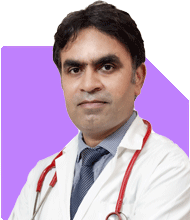Ramalingam Kalirajan |6760 Answers |Ask -Follow
Mutual Funds, Financial Planning Expert - Answered on Oct 23, 2024
He has an MBA in finance from the University of Madras and is a certified financial planner.
He is the director and chief financial planner at Holistic Investment, a Chennai-based firm that offers financial planning and wealth management advice.... more

Hello, I am 40 and currently working in MNC. Below are details of my Assets and Liabilities. I have 2 kids at the age of 5 and 2. Would it be wise decision to retire now and spend time with Kids and their development? Assets 1. Government Soverign Bond - 1.6cr 2. EPF - 71 Lakh 3. PPF - 50 Lakh 4. Shares (Reliance) - 1.2 cr 5. MF - 1.20 cr Liabilties 1. Home Loan - 35 lakhs 2. Payment for LIC : 6 lakhs Annually 3. Kids school fees : 4 lakhs Annually 4. Monthly MF Sip : 3 lakh monthly My current take home salary is 3.5 lakh monthly
Assets
Government Sovereign Bonds: Rs. 1.6 crores
EPF: Rs. 71 lakhs
PPF: Rs. 50 lakhs
Shares (Reliance): Rs. 1.2 crores
Mutual Funds: Rs. 1.2 crores
Liabilities
Home Loan: Rs. 35 lakhs
Annual LIC Premium: Rs. 6 lakhs
Kids’ School Fees: Rs. 4 lakhs annually
Monthly SIP in Mutual Funds: Rs. 3 lakhs
You have substantial assets, and your current liabilities are manageable. However, considering early retirement is a big decision. It needs careful evaluation from all angles.
Evaluating Early Retirement
Current Income and Expenses
Your take-home salary is Rs. 3.5 lakhs monthly, and you invest Rs. 3 lakhs into mutual funds. This leaves Rs. 50,000 for other expenses, including home loan EMI, LIC premiums, and children's school fees. Retirement would mean losing this income and relying solely on your investments and savings.
Importance of Liquidity and Cash Flow
While your assets are strong, much of your wealth is tied up in long-term investments like Sovereign Bonds, EPF, and PPF. These assets are good for the future but may not offer immediate liquidity. Once you retire, you will need liquidity for regular expenses.
It’s important to note that while your Mutual Funds (Rs. 1.2 crores) and Shares (Rs. 1.2 crores) are liquid, they are subject to market volatility. You might need to draw from these assets for both short- and long-term goals, making it necessary to plan carefully to avoid depleting them prematurely.
Evaluating Long-Term Needs
Children's Future Expenses
Your kids are young, at 5 and 2 years old. You will need to consider long-term expenses such as:
School fees, which could increase.
College education, which could be significant.
Wedding costs, which are substantial in India.
You will need a dedicated fund to cover these future costs while ensuring that your lifestyle does not suffer in the present.
Ongoing Liabilities
Home Loan: With a Rs. 35-lakh home loan, the EMI is an ongoing expense. You must account for this in your financial planning post-retirement.
LIC Payments: Rs. 6 lakh annually for LIC is a significant cost. Consider if this policy aligns with your retirement goals. LIC policies generally offer lower returns compared to mutual funds. You may want to discuss with a Certified Financial Planner if surrendering the policy and investing elsewhere is a better option.
Monthly SIP: While a Rs. 3-lakh SIP is a great long-term investment strategy, will you be able to sustain this after retirement? You need to evaluate if this amount can be reduced to manage cash flow better.
Market Risks and Volatility
A large portion of your assets is in shares and mutual funds. These are subject to market risks. While these investments generally grow over time, you may face periods of market downturns, which could impact your retirement corpus.
Also, it's important to consider capital gains taxes when withdrawing from these investments. Long-term capital gains (LTCG) on equity mutual funds above Rs. 1.25 lakh are taxed at 12.5%. Short-term capital gains (STCG) are taxed at 20%. These taxes will affect the returns on your mutual fund investments when you withdraw them.
Assessing the Benefits of Actively Managed Mutual Funds
Disadvantages of Index Funds
If you hold index funds, it’s important to understand the drawbacks. Index funds are passively managed and aim to replicate the market index. They do not outperform the market and are limited in scope for beating inflation or generating significant returns. In contrast, actively managed funds, handled by professional fund managers, can outperform the market by investing in sectors and companies with higher growth potential.
Actively managed funds can adjust to market conditions, making them a better option for long-term wealth generation. It's advisable to shift focus toward these funds for better returns in the future.
Regular Funds vs Direct Funds
If you have been investing in direct funds, consider the following disadvantages:
Direct funds lack personalized advice, which is critical, especially post-retirement.
Investing through a Certified Financial Planner (CFP) and a Mutual Fund Distributor (MFD) can give you expert guidance and timely advice. They help in asset allocation, reviewing your portfolio, and ensuring your investments align with your retirement goals.
Regular funds come with a slightly higher cost but offer the advantage of professional support, which can optimize your returns in the long run.
Future Planning: Children's Education, Lifestyle, and Healthcare
Children’s Education and Weddings
You should set aside funds specifically for your children’s higher education and weddings. Consider investing in child education plans or balanced mutual funds that provide growth over time. This will ensure that you do not have to liquidate your other investments prematurely.
Maintaining Lifestyle
After retirement, you will need to maintain a balance between enjoying life with your children and ensuring financial security. Your current investments in government bonds, EPF, and PPF are good but not sufficient for daily expenses. You will need to draw from your liquid investments wisely, ensuring that your lifestyle remains comfortable while your assets continue to grow.
Healthcare
As you approach retirement, healthcare becomes a key concern. Ensure that you have comprehensive health insurance in place for both yourself and your family. Unexpected medical expenses can quickly deplete your retirement funds, so a good health cover is essential.
Final Insights
While your asset base is strong, retiring now may not be the most financially prudent decision, especially with young children and significant liabilities. Here are key takeaways:
Liquidity: You need more liquidity to cover monthly expenses without disturbing your long-term investments.
Children’s Education: Plan a dedicated fund for their education and weddings.
Home Loan: Focus on paying off your home loan before considering early retirement.
LIC Policy: Consider surrendering or reducing your annual Rs. 6-lakh LIC premium and reinvesting in high-growth mutual funds.
Retirement Planning: Continue working for a few more years to strengthen your financial position and ensure a worry-free retirement.
Early retirement is tempting but requires careful planning to ensure that your wealth continues to grow while meeting all your future needs.
Best Regards,
K. Ramalingam, MBA, CFP,
Chief Financial Planner,
www.holisticinvestment.in
https://www.youtube.com/@HolisticInvestment
You may like to see similar questions and answers below
Ramalingam Kalirajan |6760 Answers |Ask -Follow
Mutual Funds, Financial Planning Expert - Answered on May 09, 2024
Ramalingam Kalirajan |6760 Answers |Ask -Follow
Mutual Funds, Financial Planning Expert - Answered on May 17, 2024
Ramalingam Kalirajan |6760 Answers |Ask -Follow
Mutual Funds, Financial Planning Expert - Answered on Aug 01, 2024
Ramalingam Kalirajan |6760 Answers |Ask -Follow
Mutual Funds, Financial Planning Expert - Answered on Sep 28, 2024
Ramalingam Kalirajan |6760 Answers |Ask -Follow
Mutual Funds, Financial Planning Expert - Answered on Oct 15, 2024
Mihir Tanna |956 Answers |Ask -Follow
Tax Expert - Answered on Oct 23, 2024
Ramalingam Kalirajan |6760 Answers |Ask -Follow
Mutual Funds, Financial Planning Expert - Answered on Oct 23, 2024
Ramalingam Kalirajan |6760 Answers |Ask -Follow
Mutual Funds, Financial Planning Expert - Answered on Oct 23, 2024
Ramalingam Kalirajan |6760 Answers |Ask -Follow
Mutual Funds, Financial Planning Expert - Answered on Oct 23, 2024
Ramalingam Kalirajan |6760 Answers |Ask -Follow
Mutual Funds, Financial Planning Expert - Answered on Oct 23, 2024
Ramalingam Kalirajan |6760 Answers |Ask -Follow
Mutual Funds, Financial Planning Expert - Answered on Oct 23, 2024
Ramalingam Kalirajan |6760 Answers |Ask -Follow
Mutual Funds, Financial Planning Expert - Answered on Oct 23, 2024
Dr Chandrakant Lahariya |71 Answers |Ask -Follow
Diabetologist, Consultant Physician, Vaccine Expert - Answered on Oct 23, 2024
Dr Chandrakant Lahariya |71 Answers |Ask -Follow
Diabetologist, Consultant Physician, Vaccine Expert - Answered on Oct 23, 2024
Dr Chandrakant Lahariya |71 Answers |Ask -Follow
Diabetologist, Consultant Physician, Vaccine Expert - Answered on Oct 23, 2024






















